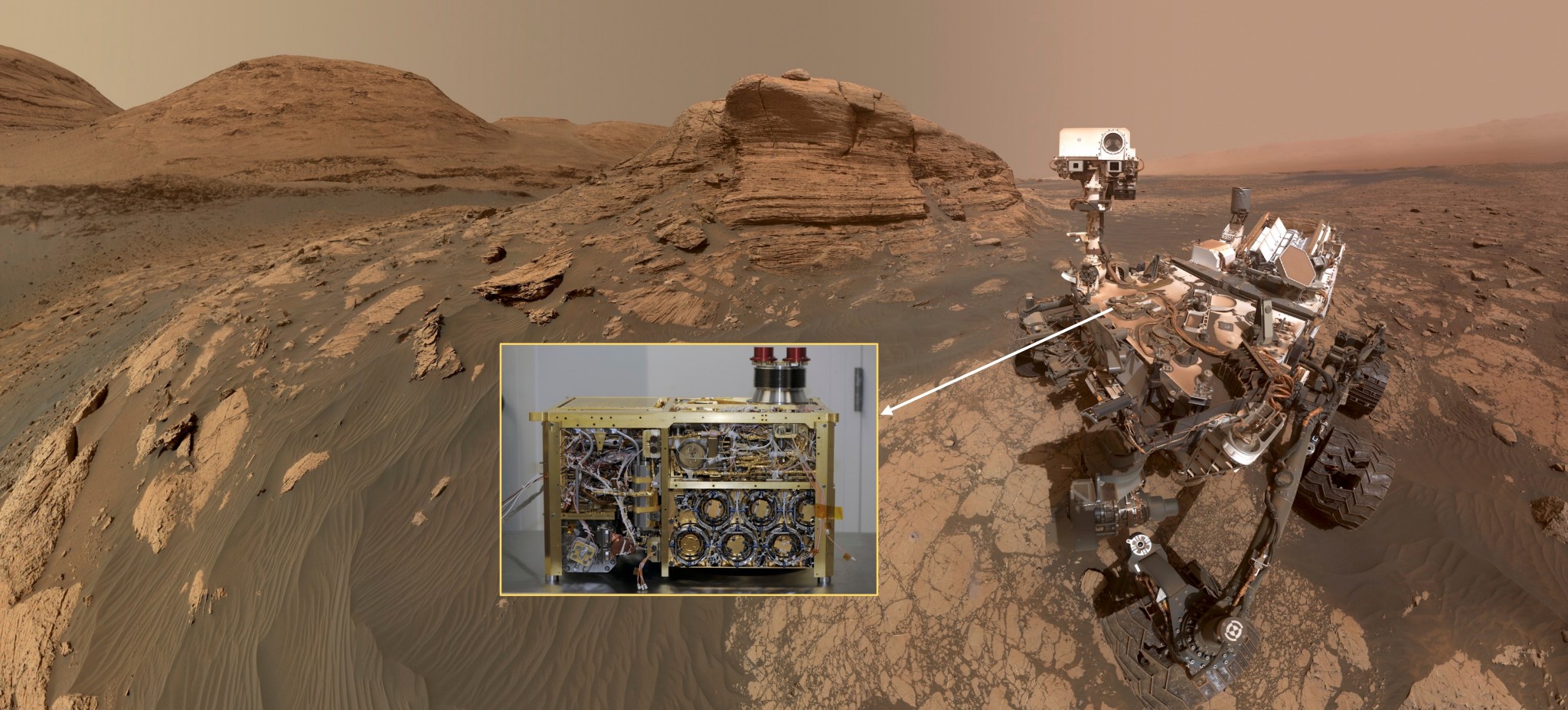Revealing the potentially habitable climate of ancient Mars is a key part of NASA’s mission to explore and understand the unknown, to inspire and benefit humanity – and for 10 years, the Curiosity rover has been on the case at the Red Planet.
To mark the occasion, here are five of the most significant discoveries that scientists have made using Curiosity’s Sample Analysis at Mars (SAM) instrument suite. SAM is one of NASA’s most powerful astrobiology instruments on Mars. Designed and built at NASA’s Goddard Space Flight Center in Greenbelt, Maryland, SAM searches for and measures organic molecules and light elements, which are important to life as we know it. To complete this task, SAM carries components that scientists use remotely to test Martian samples.

1. Detection of Organic Compounds on Mars
Charles Malespin and Amy McAdam, SAM’s principal and deputy principal investigators at Goddard, very much agree on SAM’s most significant finding: SAM detected organic molecules in rock samples collected from Mars’ Gale crater. Organic molecules (those containing carbon) could be used as building blocks and “food” for life. Their presence on Mars suggests the planet once could have supported life, if it ever was present.
While the isotopes in carbon dioxide and methane measured during some SAM sample analyses could be consistent with ancient biological activity producing the organics observed, importantly there are also non-life-based explanations – for example, this isotopic signal could be a result of an interaction between ultraviolet light from the Sun and carbon dioxide in Mars’ atmosphere producing organics that fall to the surface, no life required.
Overall, these results motivate ongoing and future studies with SAM and the entire Curiosity suite of instruments, as well as other planetary missions searching for evidence of habitable environments and life beyond Earth.
2. Methane Variability
Using SAM’s Tunable Laser Spectrometer, developed at NASA’s Jet Propulsion Laboratory in Southern California, scientists have detected fluctuations in the abundance of methane in the near-surface atmosphere where Curiosity gathers samples. On Earth, most of the methane present in the atmosphere gets there thanks to processes from life and varies as a result of changes in biological processes, but we do not know whether this is the case on Mars.
Curiosity isn’t equipped to determine whether or not the methane it has detected originates from biological processes, but the host of Red Planet missions continue to piece together the tantalizing puzzle.
3. Rock Formation and Exposure Age in Gale Crater
Curiosity had only been on Mars for a bit more than a year when, thanks to SAM, scientists determined both the formation age and the exposure age of a rock on the surface of another planet for the first time.
The rocks around the rim of Gale crater were formed about 4 billion years ago, then transported as sediments to Yellowknife Bay. “Here they were buried and became sedimentary rocks,” McAdam said. From there, weathering and erosion slowly broke down and exposed the rocks to surface radiation about 70 million years ago. Apart from providing insight into Mars’ erosion rates, knowing how long a sample was exposed enables scientists to consider possible radiation-induced changes to organic compounds which could affect the ability to identify potential biosignatures.
“The age dating experiment was not planned before launch,” McAdam said. “But flexibility in the design and operation of SAM, and dedication of a team of scientists and engineers, enabled it to be successfully carried out.”
4. Honing in on the History of Water on Mars
SAM has also shed light on Mars’ wetter past and how the planet has dried out. Water is vitally important to life as we know it, and “multiple lines of evidence indicate that the rocks of Gale crater record a rich history of water,” Malespin said. Part of that evidence is the presence of jarosite, a ruddy-yellow mineral only formed in watery environments, McAdam said. An age-dating experiment with SAM and another Curiosity instrument (APXS) found jarosite hundreds of millions of years younger than expected.
This finding suggests that even as much of the surface of Mars was becoming dry, some liquid water remained below the surface in the Gale crater environment, extending the period of habitability for any Martian microbes that might have existed.
In addition, analyses by SAM provided insight into the loss of Mars’ atmosphere that led its long-term evolution from the early warm and wet state to the current cold and arid state. Water, H2O, contains two hydrogen atoms and one oxygen atom. The hydrogen can be swapped for a heavier form of itself, called deuterium. Through measuring the deuterium-to-hydrogen ratio in its samples, Curiosity uncovered evidence of a history of hydrogen escape and water loss on Mars.
5. Biologically Useful Nitrogen
On Earth, nitrogen is an essential ingredient in the recipe for life — but not just any nitrogen will do. For most biological processes to make use of it, the nitrogen atoms must first be “fixed”: freed from its strong tendency to interact only with itself. “Fixed nitrogen is required for the synthesis of DNA, RNA, and proteins,” Malespin said. “These are the building blocks of life as we know it.”
SAM detected fixed nitrogen in the form of nitrate in rock samples it analyzed in 2015. The finding indicated that biologically and chemically usable nitrogen was present on Mars 3.5 billion years ago.
“While this nitrate could have been produced early in Martian history by thermal shocks from meteor impacts,” McAdam said, “it is possible that some could be forming in the Martian atmosphere today.”
No finding from SAM or Curiosity’s other instruments can offer proof-positive for past life on Mars – but importantly, these discoveries don’t rule it out. Earlier this year, NASA extended Curiosity’s mission at least into 2025, allowing the rover and its mobile SAM chemistry lab to stay focused on the tantalizing matter of Mars’ habitability.
By Nick Oakes
Media Contact:
Bill Steigerwald

























